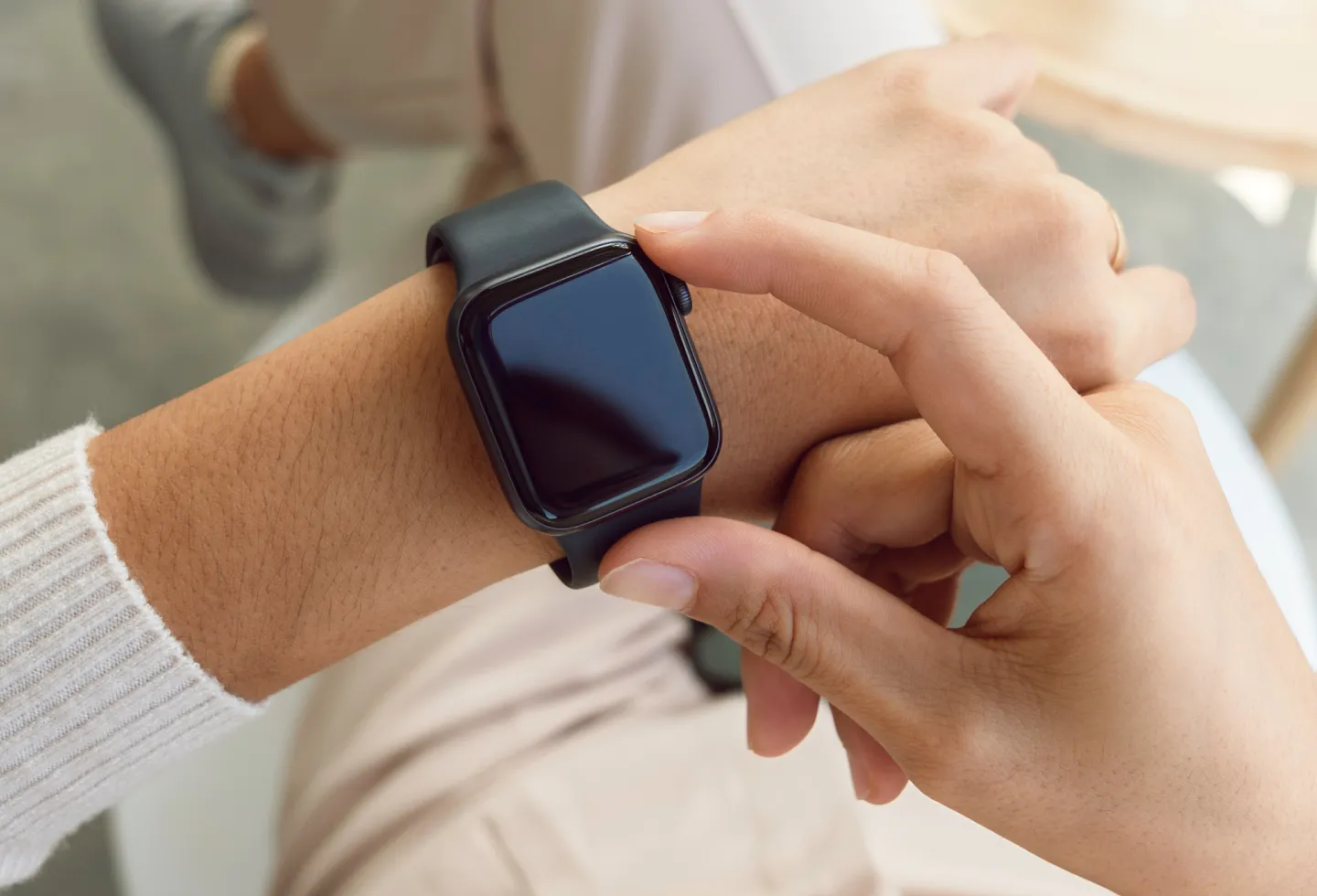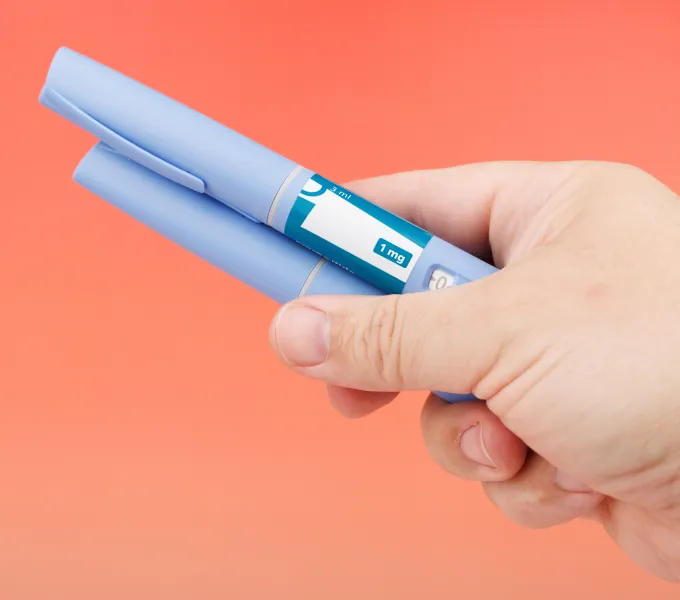
How Wearables Can Play a Role In Your Pelvic Health
Clinically reviewed by Liz Miracle, PT, MSPT, WCS.
The fitness wearable market has exploded with options, from Oura rings and Whoop bands to Garmin and Apple Watches. While you might not immediately connect these devices to pelvic health, the data they collect can be surprisingly valuable for managing your pelvic floor health and conditions like pelvic pain, endometriosis, and prolapse.
What’s the connection between pelvic health and physical health?
Pelvic health is complex and tied to various areas outside of reproductive health, including mental health and overall musculoskeletal health. While different pelvic health conditions may have different causes (like events such as childbirth, trauma, genetics, injuries, or hormone imbalances) we do know that there is also a connection between emotional and mental health and pelvic health.
Physical Health and Exercise
Overall activity levels and physical exercise are important factors when it comes to your physical health. Staying physically active serves your entire body, and that includes your pelvic health and pelvic floor muscles. Exercise encourages healthy blood flow and circulation, which is important when experiencing pelvic health issues. It's important to know the types of exercise that are appropriate for your body and specific pelvic health concerns, which a physical therapist can help you identify. Just as it's important to exercise to stay healthy, it's also crucial to avoid any exercises that could hinder your progress if you are experiencing pelvic health issues.
Sleep
Sleep is a cornerstone of health generally, but also when it comes to pelvic health. Getting enough, quality rest is key for resetting the entire body and brain. But not getting enough quality sleep can also hinder your body's natural healing process, in addition to tanking your mood and energy levels. When sleep suffers, so does your overall health and this has a ripple effect on your pelvic health.
Mental and Emotional Health
Anxiety is tied to pelvic pain. Since anxiety can create a physical stress response in the body (i.e. muscle tightening or guarding), that response can have an effect on muscles, including the pelvic floor. Conversely, pelvic pain can also cause emotional distress and anxiety due to the toll it can take on your life and relationships. This vicious cycle is one root of chronic pelvic pain.
So, can stress cause pelvic pain? As mentioned above, stress impacts pelvic pain and overall health. Stress has a cascade of effects across different parts of life and health, including sleep, eating habits, movement, and more. With this in mind, how can wearables help you track and manage stress as part of a larger goal to manage pelvic pain and pelvic health?
How to track stress with wearables
Although each wearable has different features and tracks different metrics, many of them track stress levels. For example, the Oura Ring has a Stress Insights feature, which uses biometric data such as heart rate, heart rate variability (HRV), and body temperature to track your stress levels. Oura also gives you a total amount of time per day that you are "stressed" vs "restored," or "relaxed", helping you see patterns of stress throughout the day, and notice when you may want to build in more restorative time. (As someone who uses the Oura ring personally, I always find this data interesting - sometimes my Oura ring will tell me I've had a "high-stress" day, when I otherwise would have thought it was normal. But the metrics are a nice reminder to check in and that it may be time to build in more rest or relaxation into my day).
Remember, while wearable data provides valuable insights, you know your body best. If your device shows high stress but you feel fine, or vice versa, trust your internal signals and use the wearable data as one piece of information rather than the definitive answer.
Keep in mind that some activities such as excitement or even "good" stress, aka eustress, can read as stress on an activity tracker. But that doesn't mean it's always the "bad" type of stress. Eustress also requires rest, but overall, eustress is a type of stress that is beneficial for your health because it helps you adapt to new situations, get out of your comfort zone, or problem solve.
Whoop also tracks stress levels with the Stress Monitor feature, which uses biometrics such as heart rate and HRV to detect stress levels. Whoop gives you a stress score between 0-3, with 3 being a high stress level. Fitbit also includes stress tracking features. While these are certainly not all the wearables out there today, most will include some form of stress tracking which can help you monitor your health and make changes where needed.
What can I look for in my wearable data when it comes to pelvic health?
Technology can offer helpful patterns and trends, but remember that these devices are tools to support, not replace, your own body awareness. When it comes to wearable data and pelvic health, you can pay attention to several types of data to better understand, and potentially get ahead of, pelvic health symptoms. For example, tracking patterns related to stress, sleep, and even your cycle can help empower you with information to better care for yourself. If you notice that your wearable is reporting higher levels of stress, lower recovery, and poor sleep for example, you can begin to hone in on those areas before symptoms become worse.
Here are some data points you could track related to pelvic health:
- Sleep: tracking sleep time/duration, quality, and patterns can be helpful for improving sleep patterns, which is beneficial for overall health and stress management.
- Stress: as mentioned above, stress is connected to physical tension and can impact pelvic pain and pelvic health.
- Recovery: some wearables track recovery from exercise or just the general strain of day-to-day life. Recovery scores or data can help you understand where your body is at, when it may need extra rest or TLC, or when you are clear to tackle a challenging task or workout.
- HRV: HRV, or heart rate variability, is an indicator of your nervous system's ability to handle stress (among other things). Higher HRV is usually an indicator that your body is well-equipped to handle physical or mental/emotional stress; this is when you want to plan a high intensity workout.
- Cycle tracking: Tracking your monthly menstrual cycle can be helpful for a variety of reasons, including for better understanding pelvic health. Tracking your cycle via a wearable can help you track and predict symptoms that fluctuate with your cycle.
How does sleep quality affect pelvic floor function and pelvic health?
We know that sleep is vital for all areas of health, and pelvic health is no different. Sleep is crucial for regulating hormones, immune system health, brain health, mood, and generally repairing and restoring the body. For this reason, tracking sleep via wearables may help you better understand sleep patterns and, therefore, find ways to better optimize your sleep.
Final Takeaway
Health and fitness wearables can provide valuable information that you can leverage to improve overall health, including for your pelvic health. The key is finding the right balance between data-driven insights and listening to your own body's wisdom; after all, no device knows you better than you know yourself. If you are looking for ways to better understand and utilize your health wearables for pelvic health, talk to your health provider for ways you can work together to understand and utilize the data for your unique concerns. Origin's providers are experts in pelvic health and can help you create a plan to address your concerns holistically.




